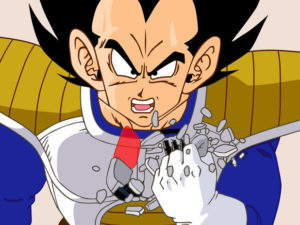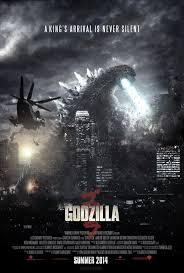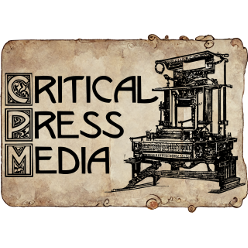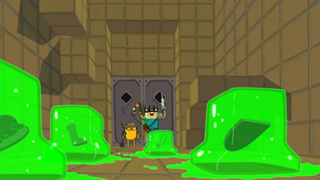The Challenge Rating System that Pathfinder uses is a holdover from D&D 3.5. This time around, Curtis and I dive into the math underneath building opponents and dig into where it works and where it doesn’t. We share some of our own observations, and offer up a more simplistic alternative – just go for it!
Tag: rpg
Dungeon of Slime
Double Disney
 I’m joined in the reaction chamber by Petra and we take on a double dose of Disney films. Maleficent is the box office darling right now, but our reaction to the film is less than enthusiastic. By the same token we finally get around to watching The Lone Ranger with Johnny Depp and Armie Hammer – a film that was nearly universally panned. And we got really excited about it. The short version of the podcast is: skip Maleficent and go see The Lone Ranger.
I’m joined in the reaction chamber by Petra and we take on a double dose of Disney films. Maleficent is the box office darling right now, but our reaction to the film is less than enthusiastic. By the same token we finally get around to watching The Lone Ranger with Johnny Depp and Armie Hammer – a film that was nearly universally panned. And we got really excited about it. The short version of the podcast is: skip Maleficent and go see The Lone Ranger.
Don’t forget, this is the final week to get in on the Opposing Forces Kickstarter, so jump in!
Podcast: Play in new window | Download
Fateful Concessions
Curt and I fire up the reaction chamber to talk about some of the documentaries we’ve watched recently. We review “Rewind This”, about the VHS tape collector’s community, “The Game Masters”, profiling the lives of several people who are into pen and paper RPGs, and “The Dungeons & Dragons Experience” a general treatment of the hobby. Following the movie reviews we discuss the mechanic of Concession in the Fate System, a counter-intuitive method of conflict resolution that has still made its way into our games. The Kickstarter for Opposing Forces is still funding, so don’t forget to check out the project and help make an awesome game book!
Podcast: Play in new window | Download
Stress Track Over 9000!
 The Fate System measures health, willpower, composure, structural integrity and even the progress of a scene using the Stress Track mechanic. This measurement tool flexes to adjust to the current situation; it is not meant to emulate the absolute durability of an object, but the relative importance of the subject to the dramatic potential of the scene. The Stress Track interacts with every skill usage in exactly the same way, but the dramatic intention of the skill dictates the way in which results are applied. In Fate Core, the four actions used to affect the Stress Track are Overcome, Create Advantage, Attack, and Defend.
The Fate System measures health, willpower, composure, structural integrity and even the progress of a scene using the Stress Track mechanic. This measurement tool flexes to adjust to the current situation; it is not meant to emulate the absolute durability of an object, but the relative importance of the subject to the dramatic potential of the scene. The Stress Track interacts with every skill usage in exactly the same way, but the dramatic intention of the skill dictates the way in which results are applied. In Fate Core, the four actions used to affect the Stress Track are Overcome, Create Advantage, Attack, and Defend.
Adventure Journals
 I’m joined in the reaction chamber by Tom and Cathy Thrush of Urban Realms. Their current Kickstarter project is running concurrently with my own and I think there’s a lot of shared interest. Urban Realms publishes fantasy maps and related material. The Adventure Journal project is a set of journals specifically designed for recording your adventures and filled with thematic design work. They’re very cool; check them out! The Opposing Forces Kickstarter is still running, providing ready made characters and gaming advice for your Fate Core games.
I’m joined in the reaction chamber by Tom and Cathy Thrush of Urban Realms. Their current Kickstarter project is running concurrently with my own and I think there’s a lot of shared interest. Urban Realms publishes fantasy maps and related material. The Adventure Journal project is a set of journals specifically designed for recording your adventures and filled with thematic design work. They’re very cool; check them out! The Opposing Forces Kickstarter is still running, providing ready made characters and gaming advice for your Fate Core games.
Podcast: Play in new window | Download
Taking Zero
 Most RPGs are predicated on the 50% success rule. Heroes will succeed half the time they attempt a task. Fate Core takes a quantitatively different approach by predicating on the 100% success rule. Heroes are equal to any task which they attempt to undertake. The static skills test throws the differences between the two approaches into stark contrast and highlights the effectiveness of each.
Most RPGs are predicated on the 50% success rule. Heroes will succeed half the time they attempt a task. Fate Core takes a quantitatively different approach by predicating on the 100% success rule. Heroes are equal to any task which they attempt to undertake. The static skills test throws the differences between the two approaches into stark contrast and highlights the effectiveness of each.
The 50% rule is seen most clearly in skill tests against a static difficulty. Pathfinder and the d20 games even have an option for players to automatically succeed at tasks within a certain difficulty range. This is known as Taking Ten or Taking Twenty because it assumes an average die roll. This type of mechanic evolved from the roots of the game as a tactical simulation, under the philosophy that success should be based on tactical choices rather than luck. When adapted for dramatic simulation, the die roll represents the effort of the characters in a very real way.
Monster Scale
 Godzilla 2014 stomps its way into theaters and I’m there at the earliest showing I can possibly sneak out to see. The movie is pretty much everything I wanted from the King of Monsters. It’s moody, atmospheric, tense, overwhelming, and destructive on every level. This is very much the Godzilla film I have wanted all my life.
Godzilla 2014 stomps its way into theaters and I’m there at the earliest showing I can possibly sneak out to see. The movie is pretty much everything I wanted from the King of Monsters. It’s moody, atmospheric, tense, overwhelming, and destructive on every level. This is very much the Godzilla film I have wanted all my life.
Curt and I take on the CW’s spring season closing. We have quite a lot to say about our hopes and fears for Arrow, The Flash, and Supernatural. Most of the rest of the lineup isn’t on our radar, but there are a few shows that are shaping up to be well worth the ride.
Podcast: Play in new window | Download
Godzilla Through the Ages
 The new Godzilla film is almost upon us! As the King stomps his way into New York and a confrontation with unidentified Muto opponents, Curt and I touch a little bit on the things the Godzilla franchise has been since its inception. We do a review of “Ecstasy of Order”, a documentary about the Tetris Championship Circuit. And finish things off with a discussion of character creation in Fate, and just how hippy-dippy backwards it seems to a couple of old-school gamers. Still, I think the payoff is worth the flower petals and barefoot guitar playing. Plus, the Kickstarter for Opposing Forces is live! Check it out! Tell your friends!
The new Godzilla film is almost upon us! As the King stomps his way into New York and a confrontation with unidentified Muto opponents, Curt and I touch a little bit on the things the Godzilla franchise has been since its inception. We do a review of “Ecstasy of Order”, a documentary about the Tetris Championship Circuit. And finish things off with a discussion of character creation in Fate, and just how hippy-dippy backwards it seems to a couple of old-school gamers. Still, I think the payoff is worth the flower petals and barefoot guitar playing. Plus, the Kickstarter for Opposing Forces is live! Check it out! Tell your friends!
Podcast: Play in new window | Download
Dark Sun Apocalypse
 Curtis and I continue our Doomsday Prepping, focusing this time on how to get ready for the advent of the Dark Sun, when a rogue asteroid spins our planet into a closer orbit, turning the world into a desert planet. Curtis got some new toys, and we do a bit about using the new Dwarven Forge miniature dungeon. The pieces are really spectacular, and there will be pictures posted into the blog later in the week. Other topics include updates on our plans to attend Fear the Con 5, Free Comic Book Day, and the premiere of The Avengers this weekend. Check out the artwork from Atomic Earth, and send us some feedback to mindspike@criticalpressmedia.com!
Curtis and I continue our Doomsday Prepping, focusing this time on how to get ready for the advent of the Dark Sun, when a rogue asteroid spins our planet into a closer orbit, turning the world into a desert planet. Curtis got some new toys, and we do a bit about using the new Dwarven Forge miniature dungeon. The pieces are really spectacular, and there will be pictures posted into the blog later in the week. Other topics include updates on our plans to attend Fear the Con 5, Free Comic Book Day, and the premiere of The Avengers this weekend. Check out the artwork from Atomic Earth, and send us some feedback to mindspike@criticalpressmedia.com!
Podcast: Play in new window | Download


